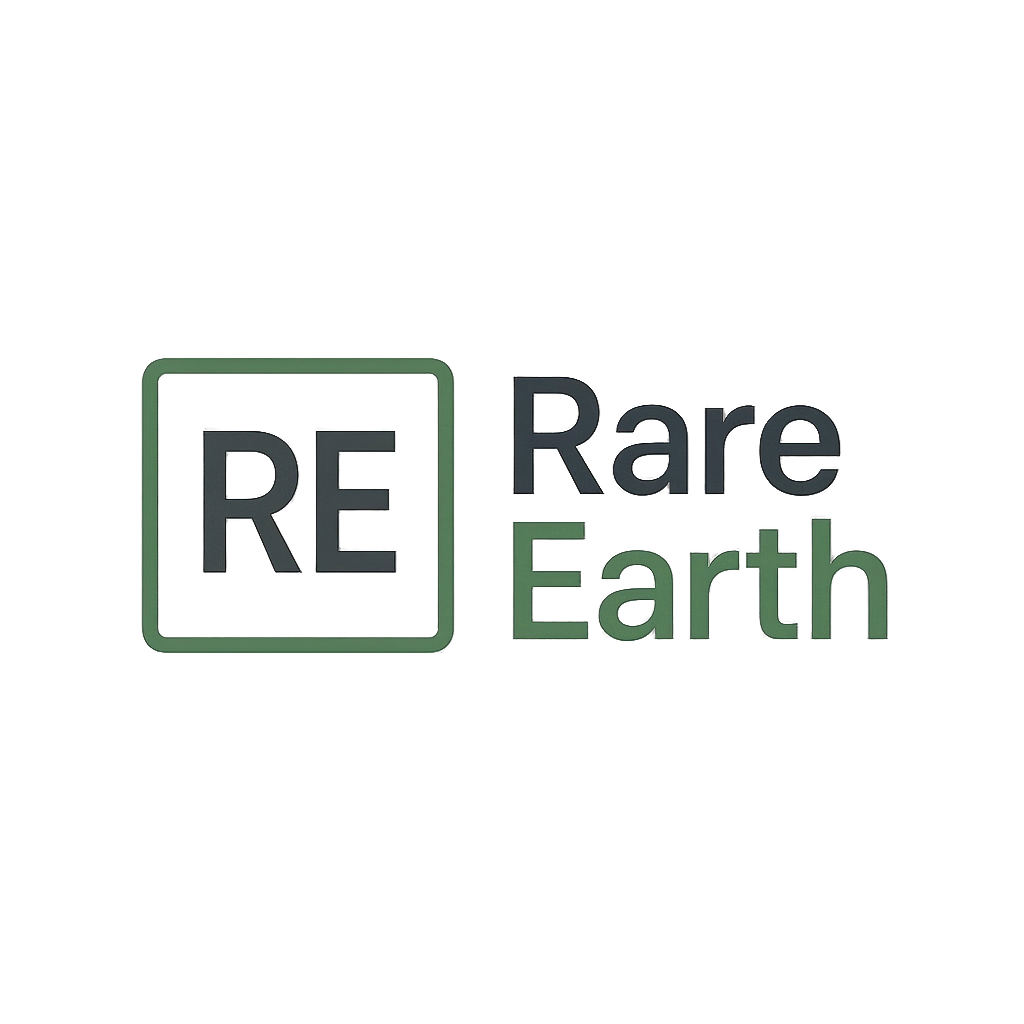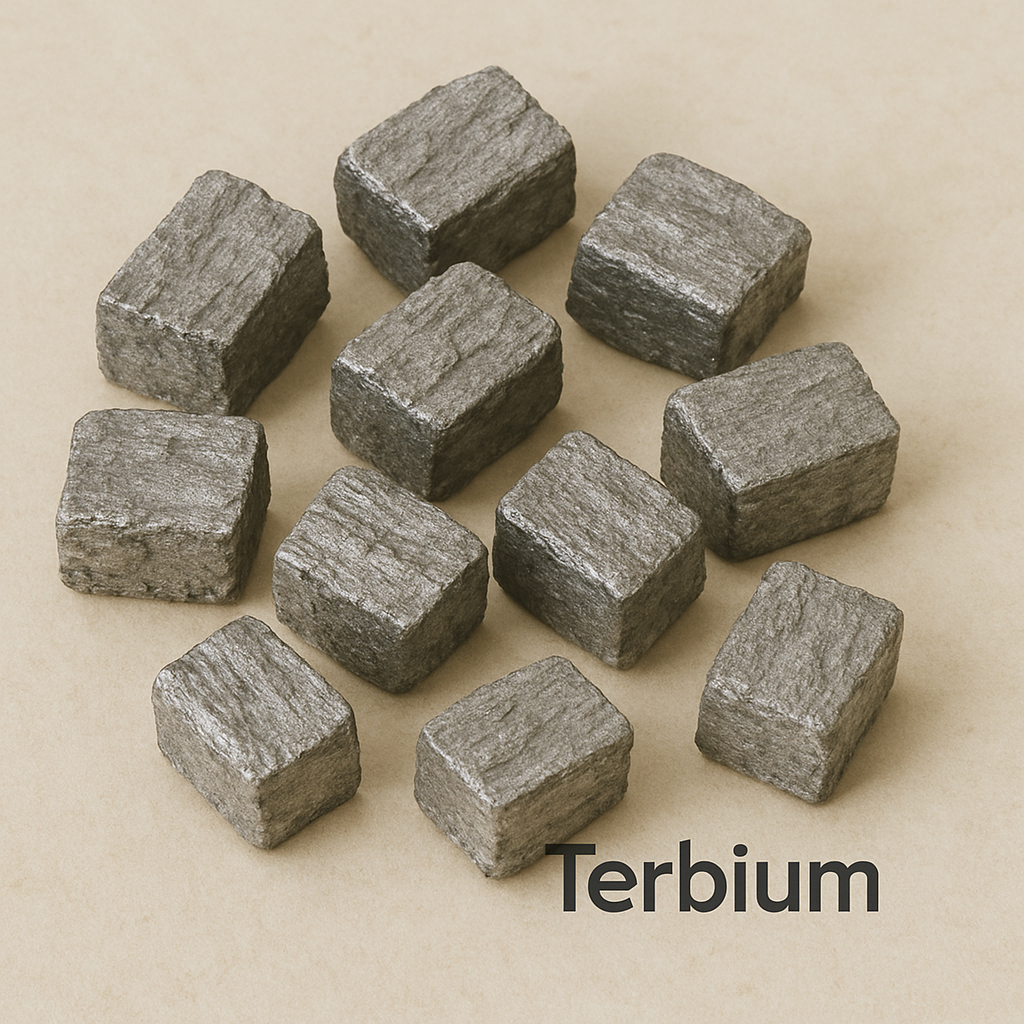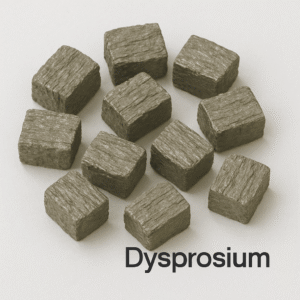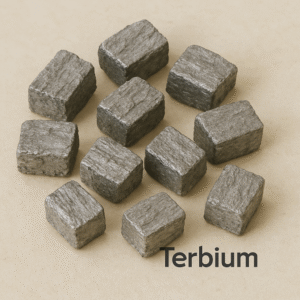Your cart is currently empty!
Europium (Eu)
Basic Information Element Name: Europium Symbol: Eu Atomic Number: 63 Atomic Weight: 151.96 Element Category: Lanthanide (Rare Earth Element) Standard State: Solid Appearance: Silvery-white, soft metal that tarnishes quickly in air Chemical and Physical Properties Density: 5.24 g/cm³ (one of the lowest among lanthanides) Melting Point: 822 °C (1,512 °F) Boiling Point: 1,529 °C (2,784 °F) Electronegativity (Pauling scale): […]
Description
Basic Information
-
Element Name: Europium
-
Symbol: Eu
-
Atomic Number: 63
-
Atomic Weight: 151.96
-
Element Category: Lanthanide (Rare Earth Element)
-
Standard State: Solid
-
Appearance: Silvery-white, soft metal that tarnishes quickly in air
Chemical and Physical Properties
-
Density: 5.24 g/cm³ (one of the lowest among lanthanides)
-
Melting Point: 822 °C (1,512 °F)
-
Boiling Point: 1,529 °C (2,784 °F)
-
Electronegativity (Pauling scale): 1.2
-
Common Oxidation States: +2 and +3
-
Reactivity: Highly reactive, especially in air and moisture
-
Magnetism: Paramagnetic
Storage and Handling
Europium is one of the most reactive lanthanides. It oxidizes rapidly in air and reacts readily with water and acids. It must be stored in an inert atmosphere (argon or nitrogen) or under mineral oil to avoid oxidation and decomposition.
Occurrence and Extraction
Europium is found in monazite, bastnäsite, and xenotime ores. Though relatively scarce, it is isolated through modern rare earth separation techniques such as ion exchange and solvent extraction, and is commercially available in oxide and metal forms.
Isotopes
-
Natural europium consists of two isotopes:
-
Eu-151 (47.8%)
-
Eu-153 (52.2%)
-
-
Europium has a few radioactive isotopes used in scientific and industrial research.
Key Applications
1. Red and Blue Phosphors (Display & Lighting)
-
Europium is critically important in phosphor technology.
-
Eu³⁺ emits red light in color TV tubes and LED backlights.
-
Eu²⁺ emits blue light, used in certain types of fluorescent lighting.
-
-
Common in:
-
LED lights
-
Smartphone and TV screens
-
Energy-saving lamps
-
Medical displays
-
2. Anti-Counterfeiting Applications
-
Europium compounds are used in fluorescent inks for banknotes, passports, and official documents.
-
Under UV light, they emit a characteristic red glow, making them ideal for security features.
3. Neutron Absorber in Nuclear Reactors
-
Europium’s isotopes (especially Eu-151) have high neutron absorption cross-sections.
-
Used in nuclear reactor control rods and shielding materials.
-
4. Specialized Glass and Lasers
-
Added to laser crystals and glass for enhanced optical properties.
-
Used in laser applications for scientific instrumentation and aerospace optics.
5. Doping Agent in Semiconductors
-
Investigated as a dopant in semiconductors and spintronic devices, due to unique electron configuration and magnetic properties.
Strategic Relevance
-
Europium is classified as a critical material by the EU and US due to its essential role in lighting, defense, and electronics, and limited global production.
-
Supply is mostly dependent on Chinese production, leading to international interest in recycling and alternative sourcing.
Interesting Facts
-
Discovered in 1901 by French chemist Eugène-Anatole Demarçay
-
Named after the continent Europe
-
Europium compounds emit the brightest red fluorescence among all rare earth elements
-
Despite its high reactivity, Eu³⁺ ions are very stable in solid-state applications, making them ideal for phosphor use
-
Critical to modern display technology since the color red is otherwise difficult to produce efficiently
Additional information
| Weight | 1 lbs |
|---|---|
| Dimensions | 1 × 1 × 1 in |
| Weight | 100G |
-
Cerium (Ce)
$257.00 -
Dysprosium (Dy)
$670.00 -
Erbium (Er)
$174.00 -
Gadolinium (Gd)
$106.00 -
Holmium (Ho)
$291.00






